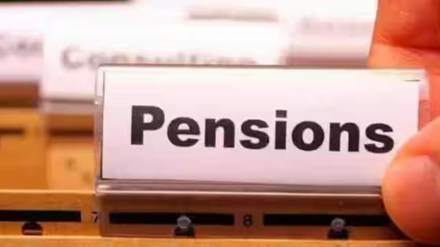The Finance Secretary-led committee on the National Pension System (NPS), set up by the government to suggest ways to increase pensionary benefits under NPS amid the move by some states to return to the unsustainable Old Pension Scheme (OPS), may suggest ways to address the demand for a guaranteed pension under the NPS for the government staff at a decent level, without burdening the exchequer too much.
While the level of guarantee, if so suggested, could depend on actuarial analysis factoring in the longevity of retirees and contributions, analysts believe that 35-40% could be feasible by tweaking the current structure of NPS. But, the cost for such guarantee could be shared by employees.
In recent interactions with the committee, the government employee unions have flagged two main issues: There is no guaranteed level of pension in NPS as it is based on market returns and the pension received by some retirees under NPS was paltry.
Officials have refuted the claim by the unions that pension is low under NPS as the example cited by them was that of lateral entrants who retired after serving a few years in service. Hence, these were not comparable with people serving for the usual career span of 33 years or more.
“Unless the government finds a way to price the guarantee and charge for it, there should not be a declaration of a guarantee. The guarantee scheme could be provided as an option, and those who wish to purchase it should be free to do so,” said Renuka Sane, the research director at TrustBridge.
Under the OPS (for pre-2004 staff), a government employee is entitled to 50% of her last salary as a pension if she has completed 33 years of uninterrupted service. Employees with uninterrupted service of more than 10 years and less than 33 years are entitled to pension on a pro-rata basis. Also, their pension gets inflation-adjusted.
According to extant NPS norms, a minimum of 40% of the accumulated NPS corpus from contributions during a person’s working years must be invested in annuities to generate a monthly pension, which is linked to annuity returns and not guaranteed. The balance of 60% can be withdrawn, which is tax-free.
Currently, the government contributes 14% of pay and employee contributes 10% to the NPS corpus.
For a guaranteed pension of say, 35-40%, some rejig in NPS would be necessary. If nearly 60% of the corpus built from the central/state government contribution (14%) is parked in a special fund under NPS, which could generate an annual return of 9-10% compared to 5-7% from annuities, the pension in NPS could be around 35-40% of last pay drawn, an analyst, who did not wish to be named, said. If actual returns work out to be less than the guaranteed amount, the gap could be bridged by the government concerned by contributing a little more to NPS.
Secondly, as people retire from the NPS system from 2036 onward and some of these die in the natural course, their pension capital amount could remain with the government. This would augment the government’s resources to fund pensions without relying too much on the budget in future.
While the NPS committee will undertake various permutations and combinations before it finalises recommendations, the warnings issued by the Reserve Bank of India and public finance experts have been quietly noted by even state governments, which have announced a return to OPS. That could be a reason it’s no longer a main political plank even for opposition political parties.
Fixed overheads in the form of establishment expenditure (largely towards salaries, wages, bonuses and pensions) account for more than 50% combined revenue expenditure of states now. This pressure could exacerbate for states which have returned to OPS including Punjab, Rajasthan, Jharkhand and Chhattisgarh.
A Reserve Bank of India (RBI) paper on Monday warned that the fiscal cost of OPS could be as high as 4.5 times that of the NPS, in the event of all the states switching to OPS from 2023.
